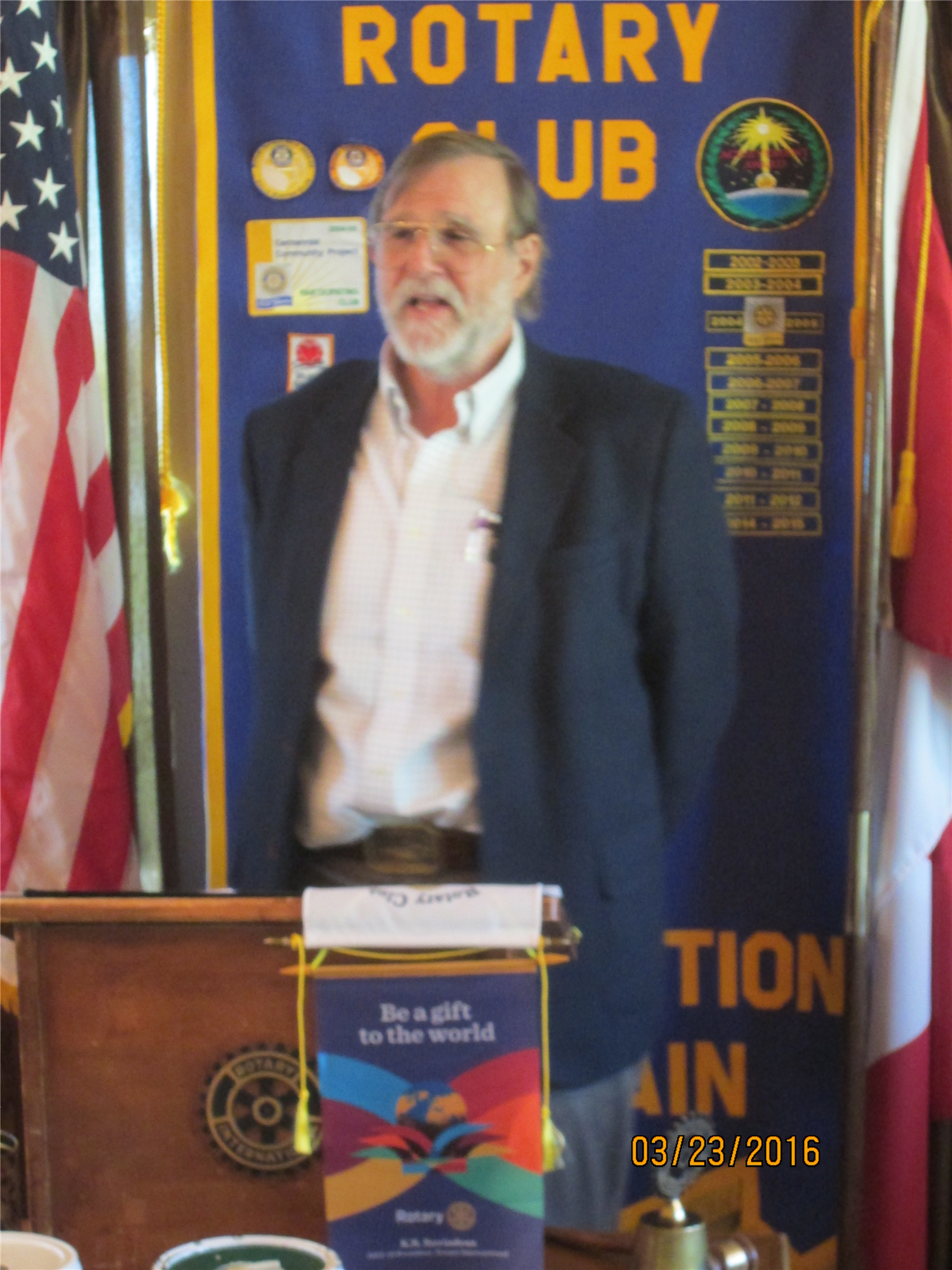SPEAKER
Harvey Clark introduced our guest speaker, Jim Schenck, Manager of Community and Social Performance at Resolution Copper in Superior, AZ.
Jim is originally from California, but at the age of 20, he moved to Columbia for a job. He spoke no Spanish at the time, but he fell in love with Latin America. As a result, he has lived most of his life in Central and South America, working primarily on community development and US foreign aid. He later worked for Pima Mining – long enough to buy a motorcycle and go to Guatemala. Jim had also been the regional director for sustainable development for Goldcorp, a gold mining company, and he had been the first manager of the Marlin Mine, a controversial gold mine and the largest mine in Central America.
In 2011, Jim and his wife moved back to the United States. He joined Resolution Copper in 2014. One of the primary reasons Jim applied for a job with Rio Tinto (Resolution’s parent company) was because of the reputation Rio Tinto has for its communities work around the world.
“The question is,” said Jim, “can you care about communities and the environment and work for a mining company. I certainly believe you can.”
Resolution Copper is a joint venture, owned 55% by Rio Tinto, and 45% by BHP. Basically, Rio Tinto runs the mine, using their standards and management systems.
Magma Copper was established in 1912 by Boyce Thompson. He had been advised NOT to purchase the old silver mine there, because the silver had played out. But Thompson realized that the live natural copper he saw there would be in great demand in the approaching war (WWI). Magma was a major producer for many years, was purchased by BHP, then finally closed its doors in 1995. At that time, the population in Superior dropped from about 6,500 people to 2,800.
In 2004, Resolution Copper Company teamed up with BHP and became the managing member of the Resolution Copper Project.
Magma was “cut and fill” vein copper mining, with ore ranging from 4 – 6% copper. That vein has played out. What remains is the “porphyry” ore body, which means that the ore is dispersed through the ore. It is about 1.5% copper, but it is rated as one of the best three ore bodies in the world. It is expected to remain active for about 40 years, providing about 25% of US copper.
Right now, Resolution Copper employs about 250 people. When the mine goes into construction, it will employ about 2,000 people. As an active mine, it will employ 1,400 people in direct jobs and another 2,300 in indirect jobs, creating about $1 billion annually in economic activity.
“The mining world has changed a lot. A mining company’s reputation balances on what they do when they close the mine and how they work with the community while they are there. One half of the value that Resolution Copper creates is profit, but the other half is the long term value proposition in the communities where they work.”
In 2014, Resolution Copper completed the deepest single lift shaft in the US: 6,943 feet. They are working now on taking another shaft to the same depth, then they will link the two. That will take “a couple of years.” Also in 2014, the Forestry Service accepted the company’s mining plan of operation. The Land Exchange Bill passed in 2014 also, clearing the way for Resolution Copper to trade 2,200 acres of federal land that sits on the edge of the ore body (including Oak Creek campground) for 5,300 acres of conservation land owned by Resolution Copper (including the Apache Lake area).
“Any project of this size has the highest level of scrutiny. We’re going to need 50 different licenses before this mine can be built.” Right now, the US Forestry Service is seeking public comment about the land swap, via website (www.ResolutionMineEIS.us), email (Comments@ResolutionMineEIS.us) phone call (1-866-546-5718), or mail (US Forest Service, P.O. Box 34468, Phoenix, AZ 85067-4468 Attn: Resolution EIS Comments). Four open houses will be held as a part of the review process. All are scheduled from 5-8 pm:
– March 31, Queen Valley Recreation Hall, 1478 East Queen Valley Drive, Queen Valley, Arizona
– April 4, Superior High School multipurpose room, 100 Mary Drive, Superior, Arizona
– April 5, Elks Lodge, 1775 East Maple St., Globe, Arizona
– April 6, Southwest Regional Library, 775 N. Greenfield Road, Gilbert, Arizona
Side Note: Contrary to popular opinion, the mine has nothing to do with the road construction currently underway between Superior and Globe.

